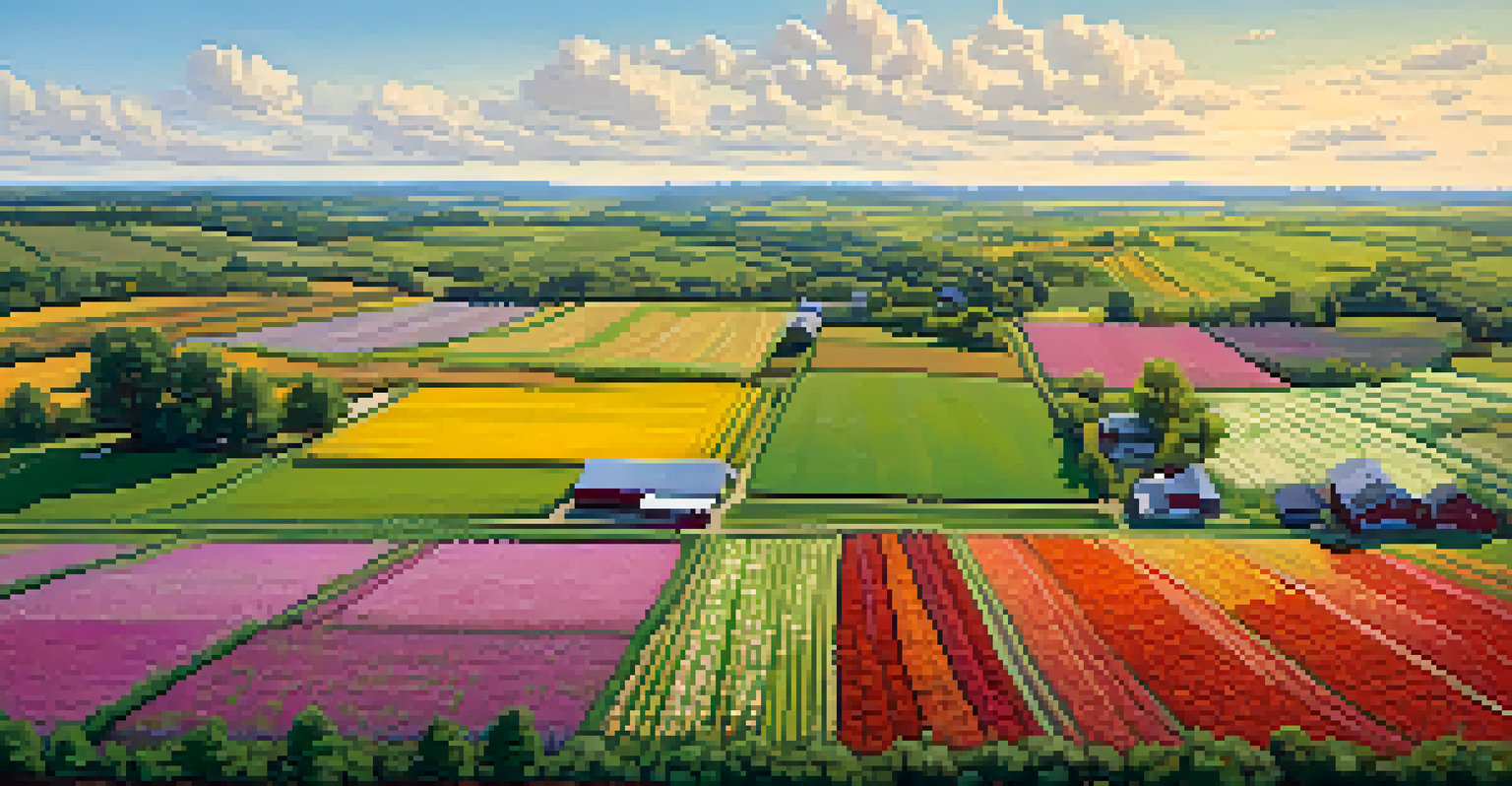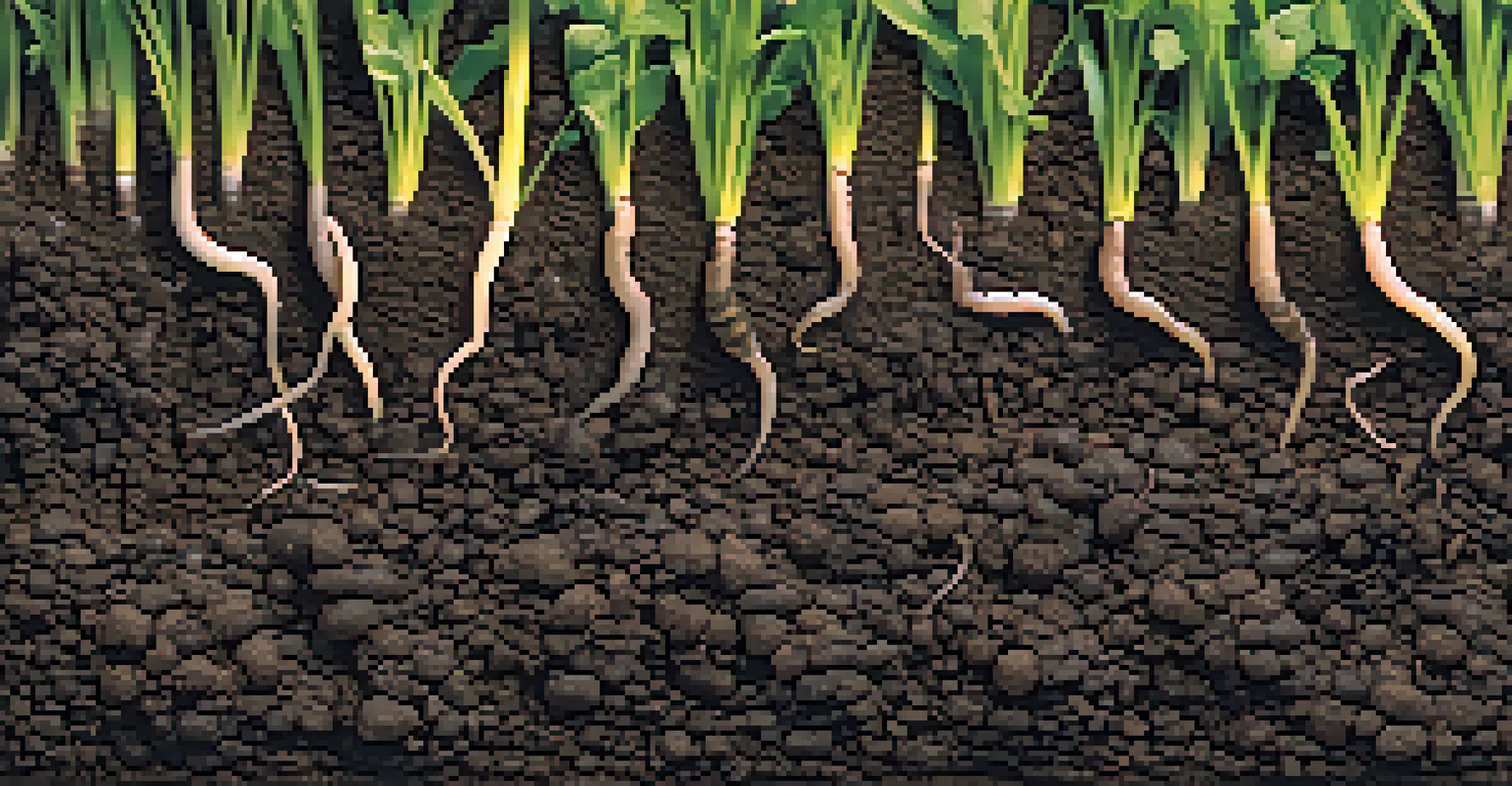Cover Crops: Benefits for Soil Quality and Plant Growth

What Are Cover Crops and Why They Matter
Cover crops are plants grown primarily to improve soil health rather than for harvest. They play a crucial role in sustainable farming by preventing soil erosion, suppressing weeds, and enhancing nutrient availability. This practice is especially beneficial in agricultural systems looking to maintain or increase productivity without relying heavily on chemical inputs.
Healthy soil is the foundation of healthy food systems, and cover crops play a crucial role in maintaining that health.
Imagine a blanket covering your garden during winter; that’s what cover crops do for the soil. By planting them during off-seasons, farmers can protect the soil structure and prevent nutrient depletion. This not only leads to healthier crops later but also supports biodiversity in the soil ecosystem.
In summary, cover crops are a simple yet effective tool for farmers aiming to cultivate healthier soil and, ultimately, more robust plants. By understanding their importance, we can appreciate how they contribute to sustainable agricultural practices.
Enhancing Soil Structure with Cover Crops
One of the standout benefits of cover crops is their ability to improve soil structure. Deep-rooted cover crops, like radishes, can break up compacted layers in the soil, allowing better water infiltration and root penetration. This creates a healthier environment for microbial life, which is essential for nutrient cycling.

When cover crops decompose, they add organic matter back into the soil, improving its texture and aeration. Think of it as adding sponges to your garden; they soak up water and provide a better habitat for plants. This improved structure not only benefits plant growth but also enhances water retention, reducing the need for frequent irrigation.
Cover Crops Enhance Soil Health
Cover crops improve soil structure, prevent erosion, and increase nutrient availability, leading to healthier crops.
Overall, by incorporating cover crops into farming practices, growers can create a more resilient soil structure. This resilience means better yields and greater adaptability to changing weather patterns, which is increasingly important in today’s climate.
Suppressing Weeds Naturally with Cover Crops
Weeds can be a farmer's worst enemy, competing with crops for nutrients, water, and sunlight. Fortunately, cover crops can act as a natural weed suppressant, reducing the need for herbicides. By planting cover crops that establish quickly, farmers can outcompete weeds for resources, effectively keeping them at bay.
Cover crops are an essential tool for building soil health and improving agricultural sustainability.
For instance, a thick mat of clover or rye can block sunlight from reaching weed seeds, preventing them from germinating. This natural barrier not only saves time and money but also promotes a healthier ecosystem by reducing chemical usage. It’s akin to having a protective shield over your garden that allows your main crops to thrive.
In essence, using cover crops as a weed management strategy can lead to cleaner fields and healthier crops. This method aligns with organic farming principles, promoting a sustainable approach to agriculture while still achieving effective results.
Improving Nutrient Availability in the Soil
Cover crops play a vital role in enhancing nutrient availability, particularly nitrogen. Leguminous cover crops, such as clover and vetch, have the unique ability to fix atmospheric nitrogen into the soil, making it accessible for future crops. This natural process reduces the need for synthetic fertilizers, which can be harmful to the environment.
When these cover crops are terminated, they release stored nutrients back into the soil, enriching it for the next planting season. Think of it as a slow-release fertilizer that feeds the soil gradually rather than flooding it all at once. This approach not only supports plant growth but also promotes a healthier soil microbiome.
Weed Suppression Naturally
By outcompeting weeds for resources, cover crops reduce the need for herbicides and promote a healthier ecosystem.
Ultimately, cover crops serve as a sustainable strategy to boost soil fertility naturally. By integrating them into crop rotations, farmers can cultivate richer soils that support vibrant plant life and sustainable agricultural practices.
Enhancing Biodiversity with Cover Crops
Planting cover crops can significantly enhance biodiversity both above and below the soil. By introducing various plant species, farmers can create diverse habitats that attract beneficial insects, birds, and soil organisms. This diversity is essential for a balanced ecosystem, which in turn supports healthier crop production.
For example, a mixture of clover, rye, and buckwheat can attract pollinators and predatory insects that control pests naturally. It’s like hosting a party in your garden where beneficial creatures gather, making sure harmful pests stay away. This symbiotic relationship can lead to reduced pest pressures and healthier crops overall.
In summary, fostering biodiversity with cover crops not only benefits the immediate environment but also contributes to long-term agricultural sustainability. A diverse system is a resilient one, capable of adapting to challenges like pests and diseases more effectively.
Reducing Soil Erosion Through Cover Crops
Soil erosion is a significant concern for farmers, as it can lead to the loss of productive land. Cover crops help combat this issue by anchoring the soil with their root systems, which hold the soil in place and reduce runoff. This is especially crucial on slopes or in areas prone to heavy rainfall.
Imagine a thick carpet of grass on a hill; it stabilizes the soil and prevents it from washing away. Similarly, cover crops protect against erosion by creating a protective layer over the soil surface. This not only preserves valuable topsoil but also maintains the land's productivity for future generations.
Biodiversity Boosts Resilience
Planting diverse cover crops attracts beneficial organisms, fostering a balanced ecosystem that supports sustainable agriculture.
Overall, cover crops are a proactive approach to minimize soil erosion and protect farmland. By investing in these practices, farmers can ensure the longevity and health of their agricultural land.
Cover Crops: A Key Component of Sustainable Agriculture
The use of cover crops is a cornerstone of sustainable agriculture, promoting practices that benefit both the environment and food production. By improving soil health, reducing chemical input, and enhancing biodiversity, cover crops support the overall ecosystem. This holistic approach is essential as we face challenges like climate change and food security.
Farmers adopting cover crops are not just enhancing their own fields; they are contributing to a larger movement toward sustainable practices. It’s like being part of a community effort where each individual action leads to shared benefits. This collective responsibility helps ensure a healthier planet for future generations.

In conclusion, integrating cover crops into farming systems is vital for sustainable agriculture. By recognizing their multifaceted benefits, we can encourage more farmers to embrace this practice, leading to a more resilient and productive agricultural landscape.